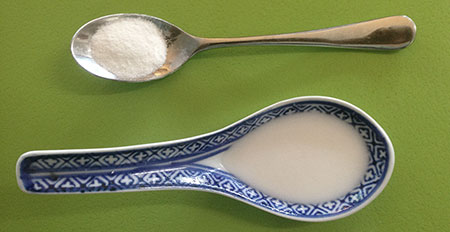You would have to go back a long way into the Brisbane rainfall records to find a drier summer than 2015/16. A meagre 100mm or so of rain has been recorded at Brisbane Airport from Dec 2015 to Feb 25. Thankfully BOM reports that El Niño is declining and a neutral phase should kick in around May.
The lack of summer h2o has left its mark across Brisbane with lawns crunching underfoot and the garden species that like their water are looking very distressed, or very dead. The consistently strong breezes during February have also hampered our garden watering efforts with most of the water being lost to evaporation. So how did your garden hold up this summer?
When soils are dry for extended periods, they can become hydrophobic – more water runs-off the soil surface, or evaporates, than will be absorbed. A simple way to test your soil is to put a small amount into a shallow dish, make a depression in the centre and pour a little water in. If the water pools in the depression, it’s hydrophobic and requires a wetting agent. Healthy soil will just absorb all the water.
“Easy, I’ll just trot off to Bunnings and pick up a bottle”, well, perhaps not. All wetting agents are not created equal. Some will do more harm than good by killing micro-organisms and sensitive plants or adding toxins to creeks during run-off. Be sure to check the ingredients and avoid alcohol or petroleum based agents.
For organic gardeners, most of what you find at the local gardening shop simply will not do. Thankfully it is quite simple to make your own organic wetting agent using agar-agar. Agar-agar is an algae extract available in powdered form from health food shops (beware of silly overpricing) and Asian food stores. Vegetarians use agar-agar as a gelatine substitute – so it’s not going to harm you, your plants or the environment.

Simply dissolve the agar-agar in hot water to form a thick paste (similar to wallpaper paste). A typical 9 litre watering can will then take 500ml of the paste. Mix together well and apply to the soil generously. An application should last for 3 to 6 months.
Further Reading
Gardening Australia’s Jerry Coleby-Williams on Seaweed fertilizer and agar.

